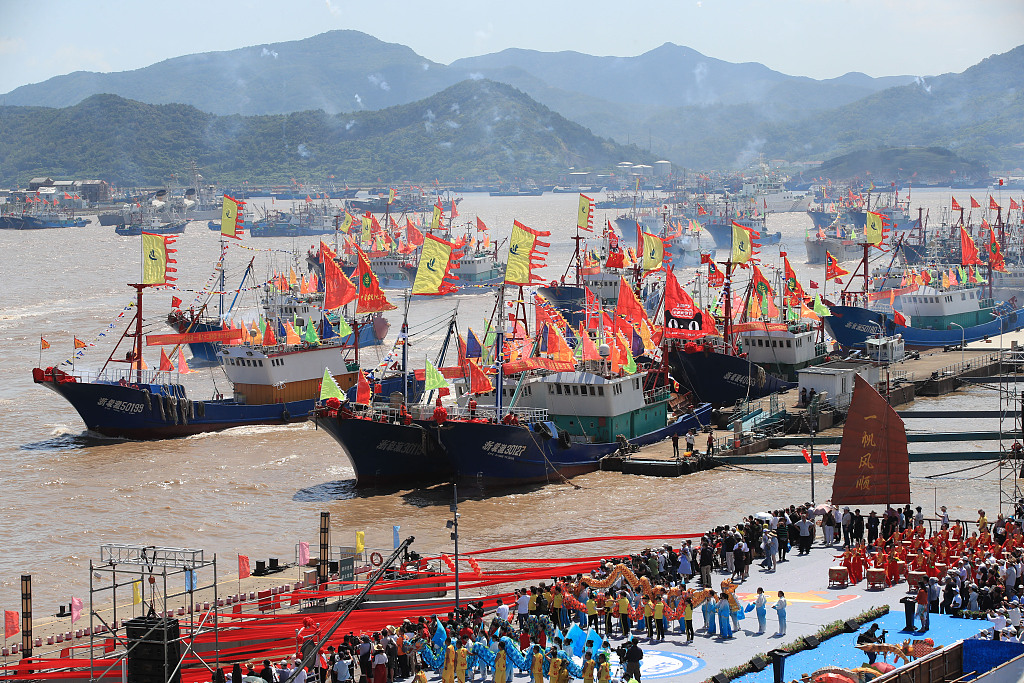
Hundreds of fishing vessels set sail on the East China Sea from Shipu port in Xiangshan County as the fishing season opens. /CFP
Hundreds of fishing vessels set sail on the East China Sea from Shipu port in Xiangshan County as the fishing season opens. /CFP
Xiangshan County is located on the southern flank of the Yangtze River Delta and is surrounded by the ocean on three sides.
Xiangshan County was designated in the first batch of national-level cultural and ecological protection zones. As an essential fishing hub in Zhejiang Province, the county has a long history in the fishing business and is rich in marine resources. With its fame, the county has been hailed as the home of Chinese fishing culture.
Every September, a major fishing festival is held to celebrate the local culture and to pay respect to the seas before the fishermen embark on the first harvest of the new fishing season. Here are some of the highlights that Xiangshan has to offer.
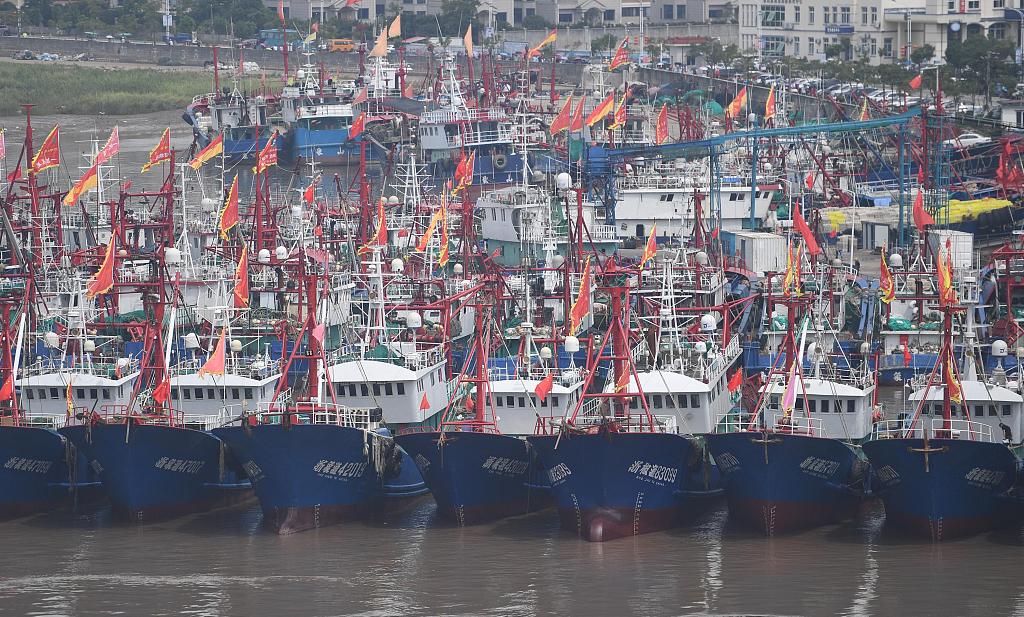
Hundreds of fishing vessels set out from Shipu port on the East China Sea after a traditional ceremony is held to worship the sea goddess. /CFP
Hundreds of fishing vessels set out from Shipu port on the East China Sea after a traditional ceremony is held to worship the sea goddess. /CFP
The Fishing Season Festival, also known as the "Kai Yu" festival, marks the start of a new fishing season in Xiangshan after a four-and-a-half-month fishing moratorium.
Held in September every year, more than a thousand fishing vessels set out from Shipu fishery port on the East China Sea after a traditional ceremony is held to worship the sea goddess.
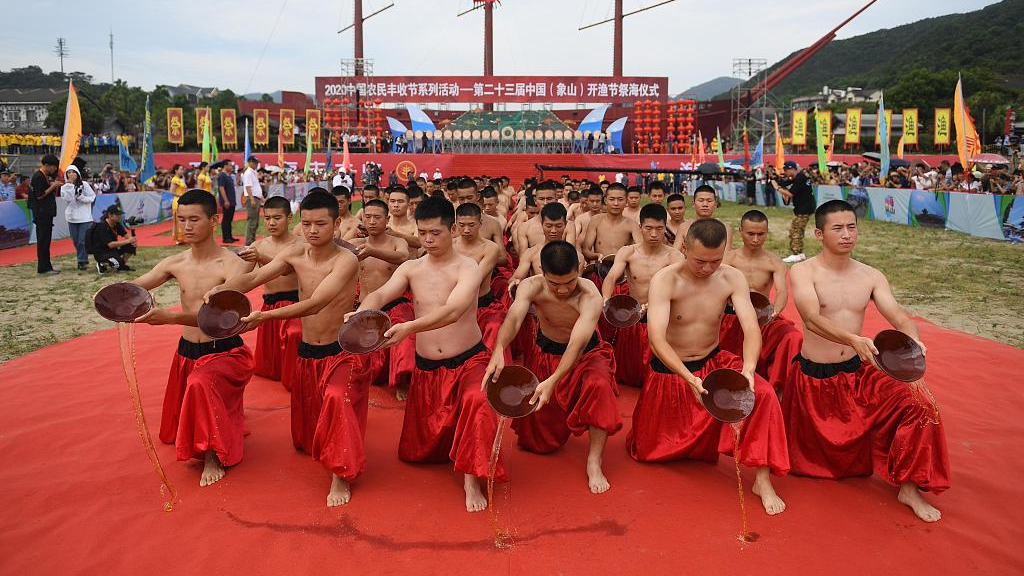
A ceremony takes place at the Fishing Season Festival in Xiangshan. /CFP
A ceremony takes place at the Fishing Season Festival in Xiangshan. /CFP
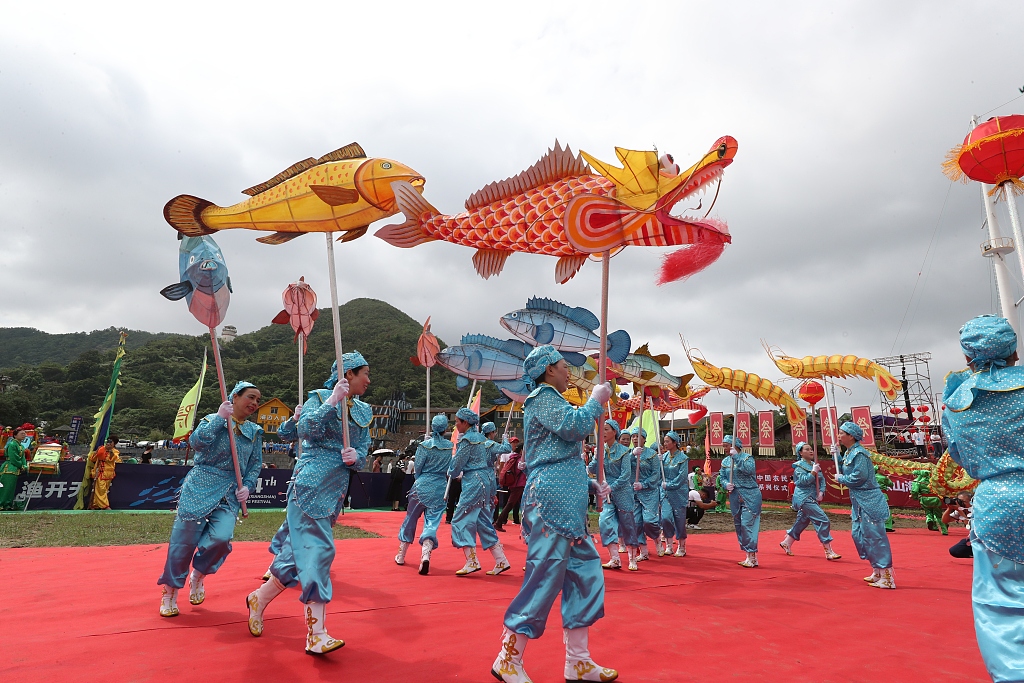
A ceremony takes place at the Fishing Season Festival in Xiangshan. /CFP
A ceremony takes place at the Fishing Season Festival in Xiangshan. /CFP
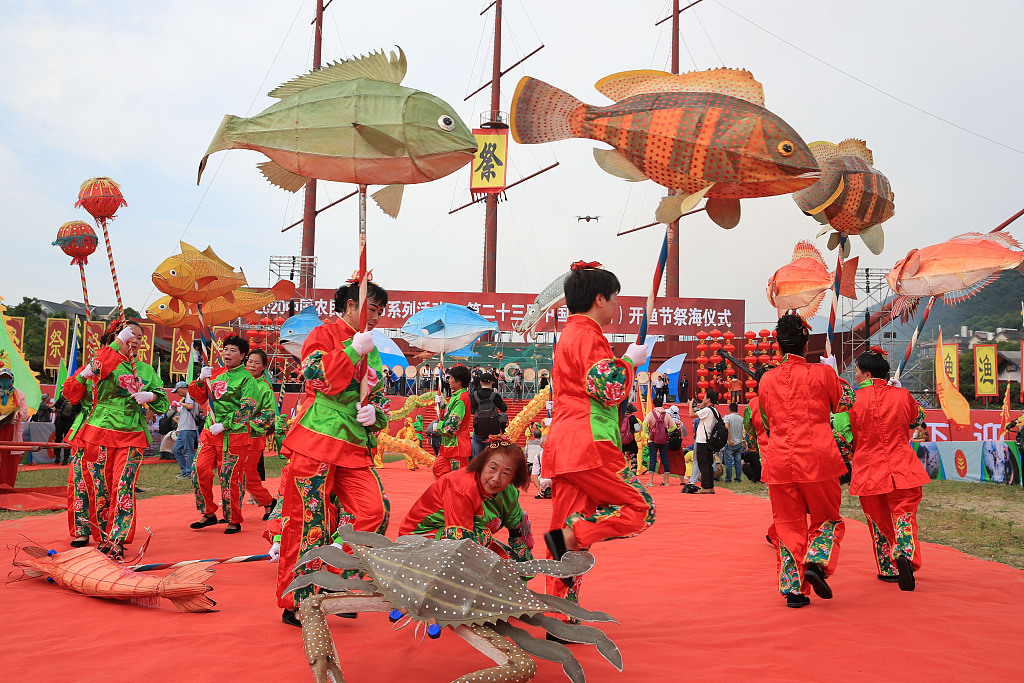
A ceremony takes place at the Fishing Season Festival in Xiangshan. /CFP
A ceremony takes place at the Fishing Season Festival in Xiangshan. /CFP
A range of activities, including a grand ceremony featuring ancient rituals dedicated to the sea and a mass flotilla, saw crowds of tourists flood into the county to witness the celebrations.
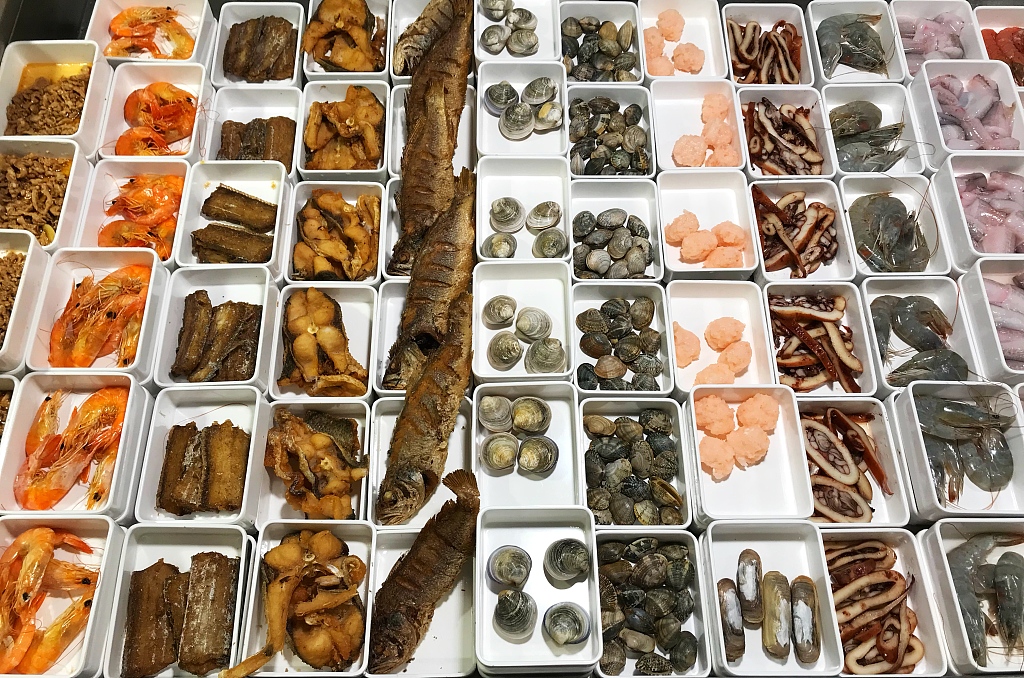
The variety of seafood on offer is an attraction for visitors to Xiangshan. /CFP
The variety of seafood on offer is an attraction for visitors to Xiangshan. /CFP
The four-and-a-half-month fishing moratorium guarantees that the deep seas will always be filled with treasures for the fishermen of Xiangshan.
Every year, a seafood festival takes place at Shipu port after the fishing season opens. Shipu is one of the largest fishing ports in China and is home to many busy seafood markets.
The Xiangshan Seafood Festival has a great variety of seafood products on offer for both locals and visitors alike, with cultural activities and performances being held to help boost sales.
The port comes alive with crowds of people, Chinese folk drumming and fireworks. Visitors can enjoy delicious seafood while watching the opening ceremony or one of the local folk shows.
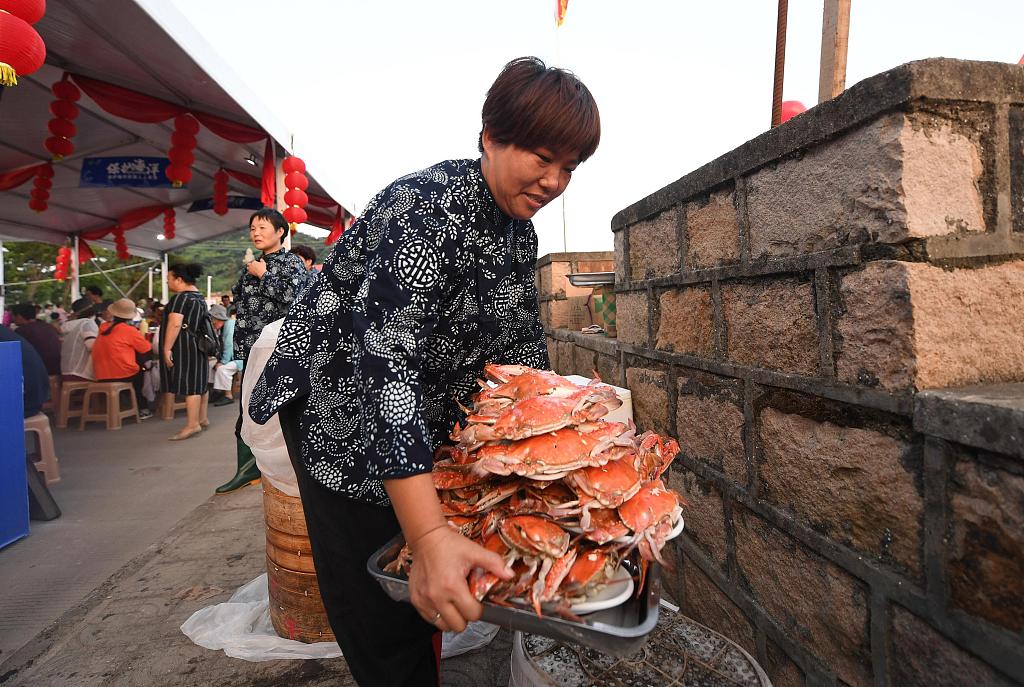
A seafood banquet is held for visitors to Xiangshan. /CFP
A seafood banquet is held for visitors to Xiangshan. /CFP
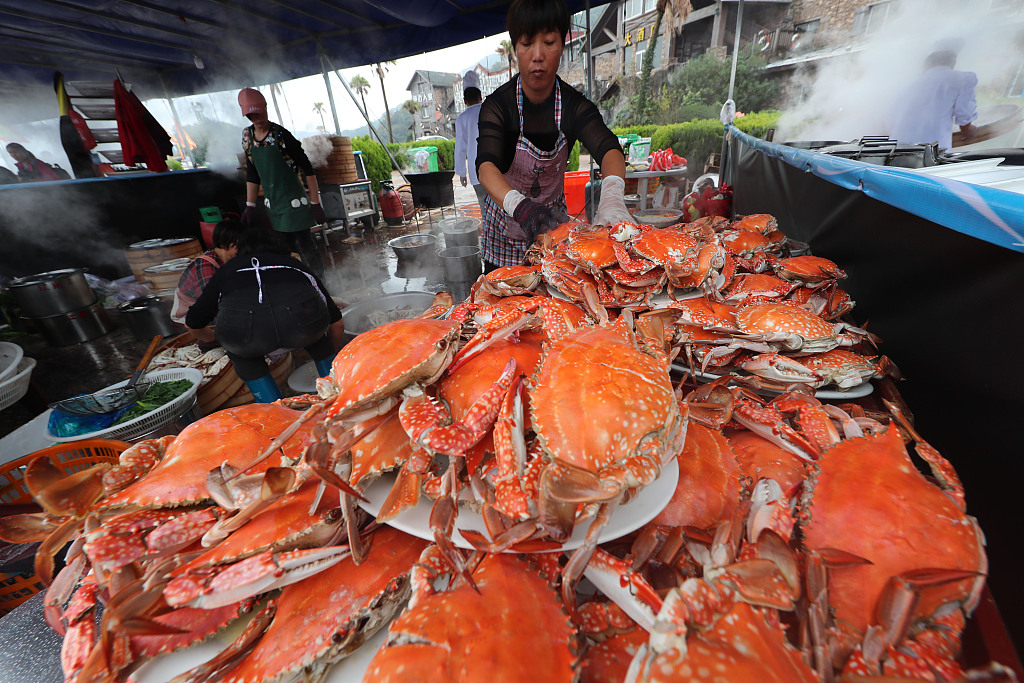
A seafood banquet is held for visitors to Xiangshan. /CFP
A seafood banquet is held for visitors to Xiangshan. /CFP
Apart from crabs and prawns, the yellow croaker – a fish species native to the western Pacific Ocean – is a popular pick for many visitors. It is generally found in the temperate waters of the East China Sea and Yellow Sea and has long served as a local specialty in the region.
Traditional sea-salt drying skills
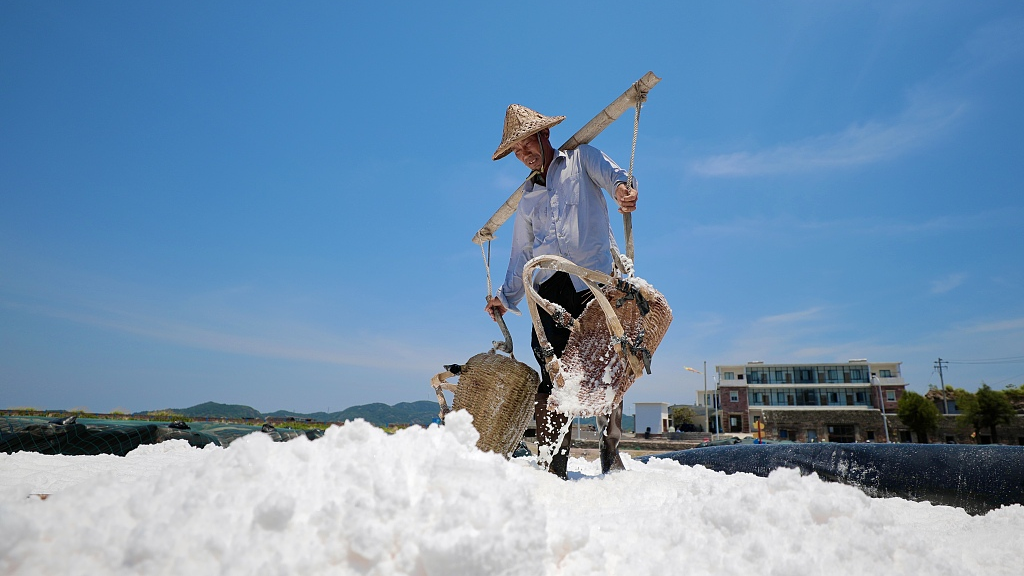
A farmer uses traditional methods to dry sea salt at Xiangshan's Hua'ao Salt Field. /CFP
A farmer uses traditional methods to dry sea salt at Xiangshan's Hua'ao Salt Field. /CFP
The manual sea-salt drying skills employed at Xiangshan's Hua'ao Salt Field are a national-level intangible cultural heritage of China that has a history dating back 1,300 years.
As the only remaining salt field in Zhejiang that relies entirely on manual labor and is still in operation, Hua'ao Salt Field is another major attraction for visitors.
Every year in midsummer, the salt field becomes a teeming scene where the age-old practice of salt making is revived.
A newly opened sea salt drying heritage center offers visitors a vivid overview of its history through exhibitions, interactive experiences and learning activities. Visitors can also take part in the millennia-old process of drying salt at the center.
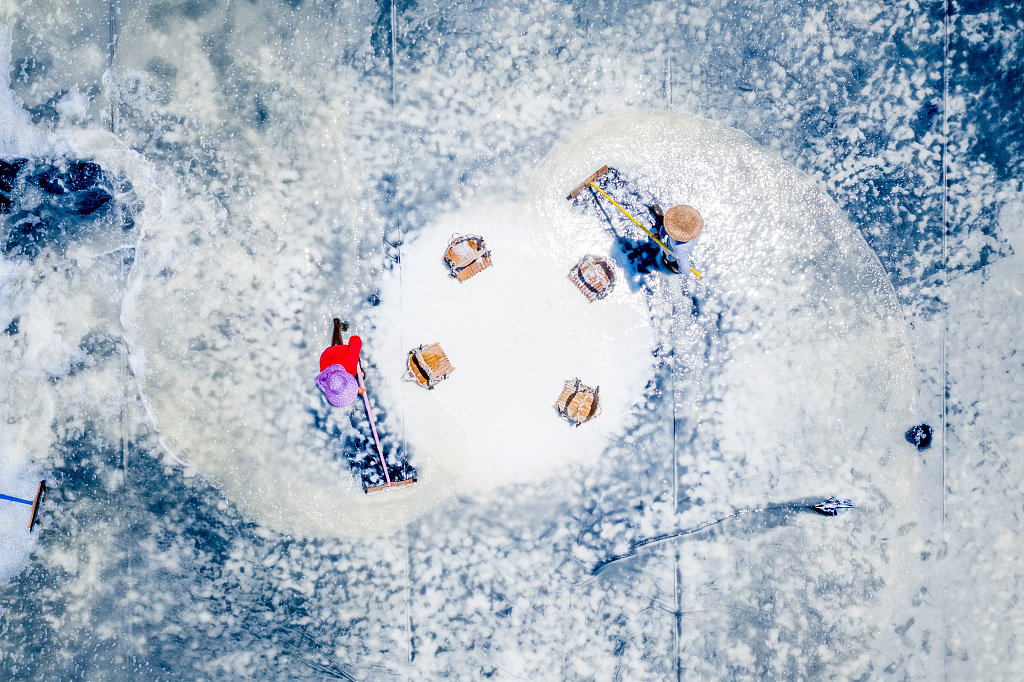
Farmers use traditional methods to dry sea salt at Xiangshan's Hua'ao Salt Field. /CFP
Farmers use traditional methods to dry sea salt at Xiangshan's Hua'ao Salt Field. /CFP